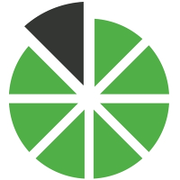Chose Sigma Computing
Retool is a much more technical tool, it requires a deep understanding of SQL before being able to build out dashboards. Sigma Computing was much more user friendly and useful for non-technical users.

| Product | Rating | Most Used By | Product Summary | Starting Price |
|---|---|---|---|---|
 Sigma | N/A | Sigma Computing headquartered in San Francisco provides a suite of data services such as code free data modeling, data search and explorating, and related BI and data visualization services. | N/A |
| Sigma Computing | |||||||||||
|---|---|---|---|---|---|---|---|---|---|---|---|
| Editions & Modules | No answers on this topic | ||||||||||
| Offerings |
| ||||||||||
| Entry-level Setup Fee | Optional | ||||||||||
| Additional Details | Contact us for pricing. | ||||||||||
| More Pricing Information | |||||||||||
| Sigma Computing | |
|---|---|
| Considered Both Products |  Sigma |
| Top Pros | |
| Top Cons |
|
| Sigma Computing | |||||||||||||
|---|---|---|---|---|---|---|---|---|---|---|---|---|---|
| BI Standard Reporting |
| ||||||||||||
| Ad-hoc Reporting |
| ||||||||||||
| Report Output and Scheduling |
| ||||||||||||
| Data Discovery and Visualization |
|
| Sigma Computing | |
|---|---|
| Small Businesses |  BrightGauge Score 8.9 out of 10 |
| Medium-sized Companies |  Reveal Score 9.9 out of 10 |
| Enterprises |  Jaspersoft Community Edition Score 9.7 out of 10 |
| All Alternatives | View all alternatives |
| Sigma Computing | |
|---|---|
| Likelihood to Recommend | 8.8 (164 ratings) |
| Likelihood to Renew | 8.0 (5 ratings) |
| Usability | 7.3 (48 ratings) |
| Availability | 8.2 (2 ratings) |
| Performance | 9.1 (2 ratings) |
| Support Rating | 8.9 (45 ratings) |
| Implementation Rating | 9.1 (2 ratings) |
| Configurability | 7.3 (1 ratings) |
| Ease of integration | 9.1 (1 ratings) |
| Product Scalability | 8.2 (2 ratings) |
| Vendor post-sale | 7.3 (1 ratings) |
| Sigma Computing | |
|---|---|
| Likelihood to Recommend |  Sigma Computing
|
| Pros |  Sigma Computing
|
| Cons |  Sigma Computing
|
| Likelihood to Renew |  Sigma Computing
|
| Usability |  Sigma Computing
|
| Reliability and Availability |  Sigma Computing
|
| Performance |  Sigma Computing
|
| Support Rating |  Sigma Computing
|
| Implementation Rating |  Sigma Computing
|
| Alternatives Considered |  Sigma Computing
|
| Scalability |  Sigma Computing
|
| Return on Investment |  Sigma Computing
|
| ScreenShots | Sigma Screenshots |